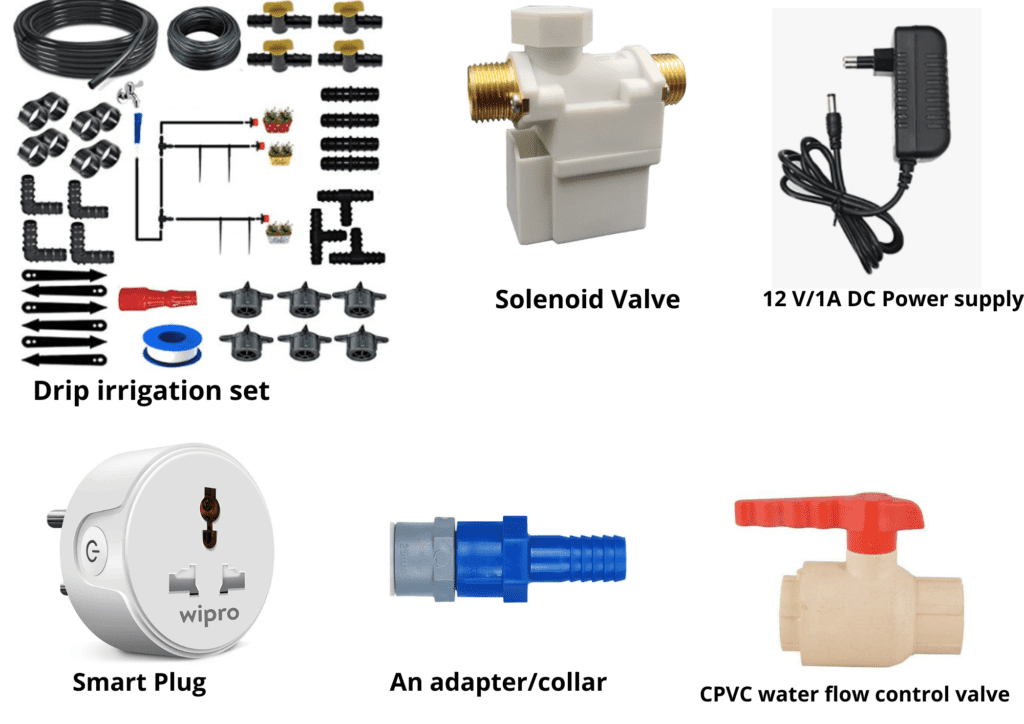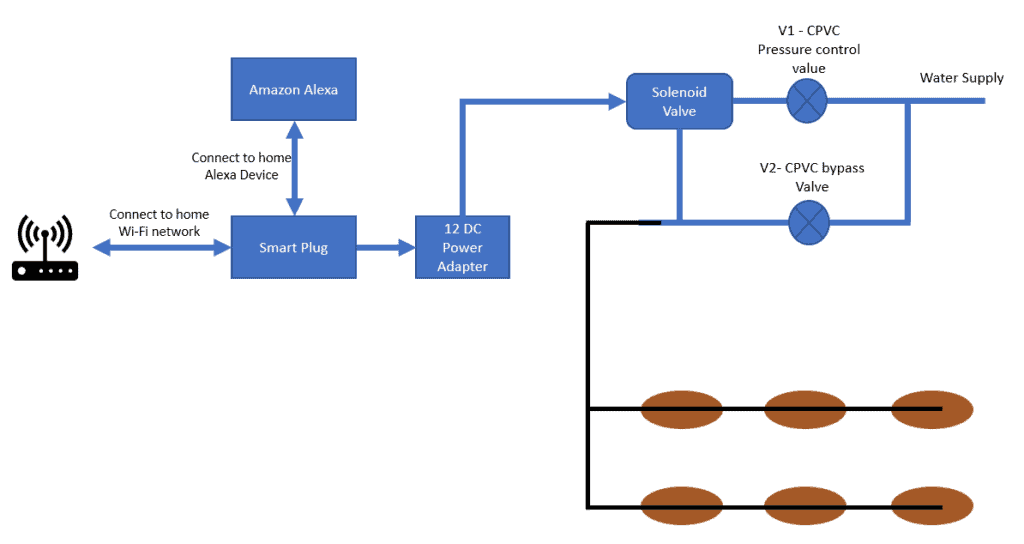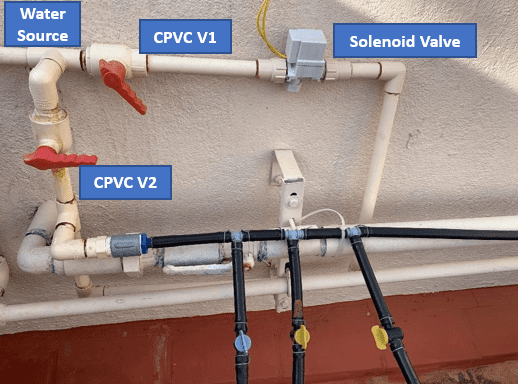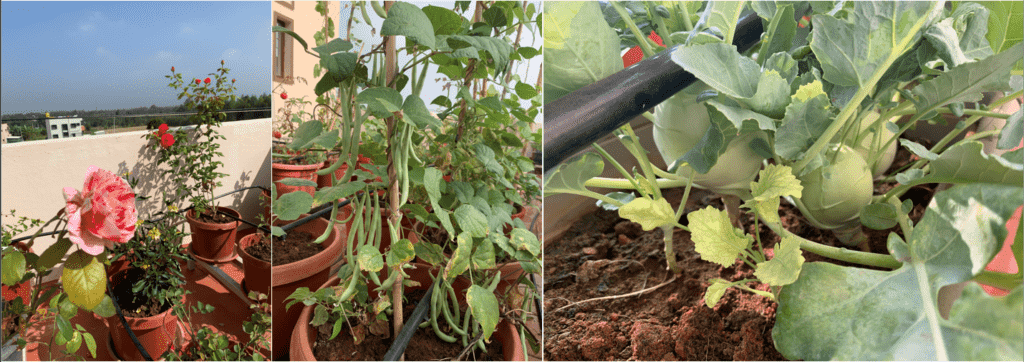Not surprisingly, gardening is probably the most common hobby in Namma Bengaluru, which truly was a ‘garden city’ when I first came here in 1997. However, over the last two decades, we have all been witness to much of that garden space being taken over by concrete. But we Bengalureans still have that in our DNA, to grow plants wherever we live, whether on the 10th floor of an apartment, in a good old typical Bengaluru house in Jayanagar or in a housing community with individual houses.
With my farming background, my decision to buy a house was based on the availability of garden space. My garden has been growing well for the last 10 years with flower plants and veggies. But I had to shift the entire garden to my terrace as my ground floor garden got covered in shade by my mango tree. My first thoughts were how to water the plants on the terrace when I am not at home. Being a techie, I started exploring different automation options available in the market and also discussed with neighbours their experience with such products. I soon realised that market solutions available had limitations in controlling the water flow when you are away from home. This led to me designing my own solution to automate watering through Alexa, a voice-based digital assistant device along with a mobile app that supports home automation to control lights and any other compatible appliances.
Items required for an automated watering system
- Drip irrigation set – one can buy the set online based on the number of plants
- Solenoid Valve – This is the crucial electromagnetic item which controls water flow. I was looking for a valve which works with 12V DC to avoid having direct power in the garden. After much experimentation, I found the valve I was looking for in this link. (Please note that I am neither promoting nor endorsing this product)
- 12 V/1A DC Power supply – available online; some of us will probably have an old one from our wi-fi routers
- A smart plug – this is another key element which switches the valve on and off to control water flow.
- An adapter/collar to connect the water supply to the drip line
- A CPVC water flow control valve – to control the water pressure in the drip lines
- Wi-fi and Amazon Alexa setup at home

Read more: No more worries about watering your plants
The diagram below depicts the overall schematic of the drip system, solenoid valve setup and integration with Amazon Alexa.

Setup process
- Plan the plants’ placement, preferably in rows, for better water flow.
- Setup the drip system directly on the pots using the primary lines. Placing the primary lines on the floor and using secondary lines to water the pots results in water leakage at connection points.
- Test the solenoid valve by connecting it to the 12V power supply — check if you can hear the sound of the valve opening and closing when the power is switched on and off.
- Connect one CPVC valve (CPVC V1) to the water source, then connect the solenoid valve to the CPVC value (CPVC V1) following the water flow direction indications on the solenoid valve (refer to the image below and also the schematic diagram).
- Connect the second CPVC Valve (CPVC V2) to the water source as a bypass line merging with the other end of the solenoid valve, then connect the merged end to the drip line. CPVC V2, the bypass valve, needs to be closed when Alexa is controlling water flow. CPVC V2 can be used for manual watering.

- Smart plug to be configured with the vendor app and then to Alexa. Follow the steps from the vendor and in the Alexa app.
- Connect the 12V DC power adapter to the smart plug with another end connected to the solenoid valve. Based on the location of the smart plug (inside the house) to the solenoid valve location, one may need extended wiring to be done.
- Valve opening or closing is controlled by the ON or OFF state of the smart plug. As the smart plug is configured to Alexa, it can be turned ON or OFF through voice commands to Alexa.
- Alexa App also offers routines to automate the ON and OFF process. One can set up a routine to switch on the plug at the preferred time and then another routine to switch off the plug after a certain period (based on the time required to water the plants)
Read more: How this Bellandur apartment set up a kitchen garden on the terrace
How automation helps in watering plants
- Takes care of watering at a predefined schedule — no worries of forgetting to water the plants as explained in this video.
- Optimum water usage; as the drip system helps control the amount of water and scheduling helps control the duration of watering.
- Manage watering your garden while you are away from home through the Alexa app. You can stop it when it rains, from wherever you are. You can increase the frequency of watering during summer by adding additional routines.
A garden which is properly taken care of grows well.
